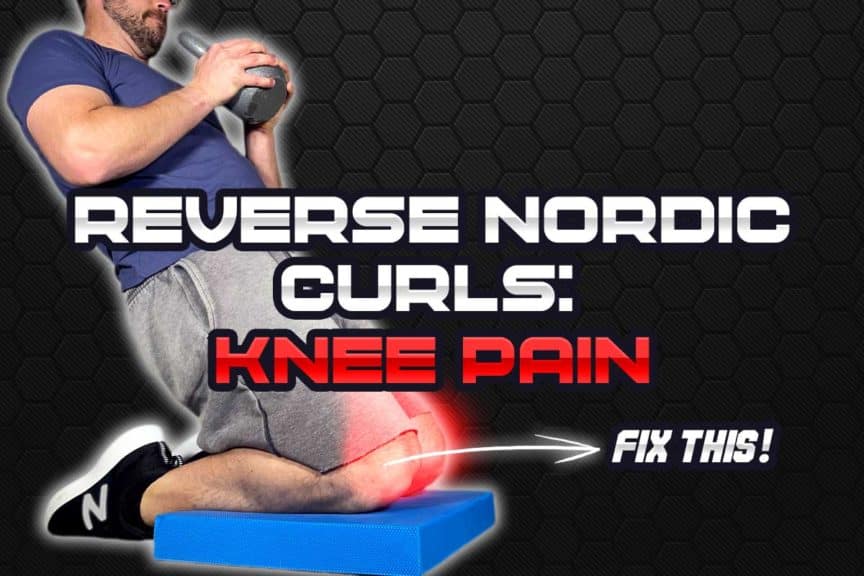The reverse Nordic curl is a beautiful exercise in terms of its overall simplicity to perform, along with the benefits it can provide. When performed and progressed appropriately, it serves as an outstanding way to strengthen the quadriceps muscles while simultaneously enhancing muscle and tendon mobility.
But if you’re having knee pain when performing this exercise, you’ll be hard-pressed to get any sort of benefits from this exercise at all. Thankfully, when it comes to knee pain from the reverse Nordic curl, it can often be cleaned up if you know the proper steps to take.
Fixing knee pain with reverse Nordic curls most often involves enhancing strength and mobility of muscles and tendons of the thigh. This is done by modifying the movement as needed while providing specific progressions of intensity that strengthen and mobilize these tissues appropriately.
There are, of course, other causes of knee pain (discussed within this article) aside from muscle and tendons that arise with the reverse Nordic curl; however, in an otherwise healthy knee, muscles and tendons tend to be the most common culprits. Thankfully, it tends to be a relatively straightforward process to clean up and sort out.
If you want to know all of the specifics with types of knee pain and how it can be remedied when performing reverse Nordic curls, be sure to keep on reading!
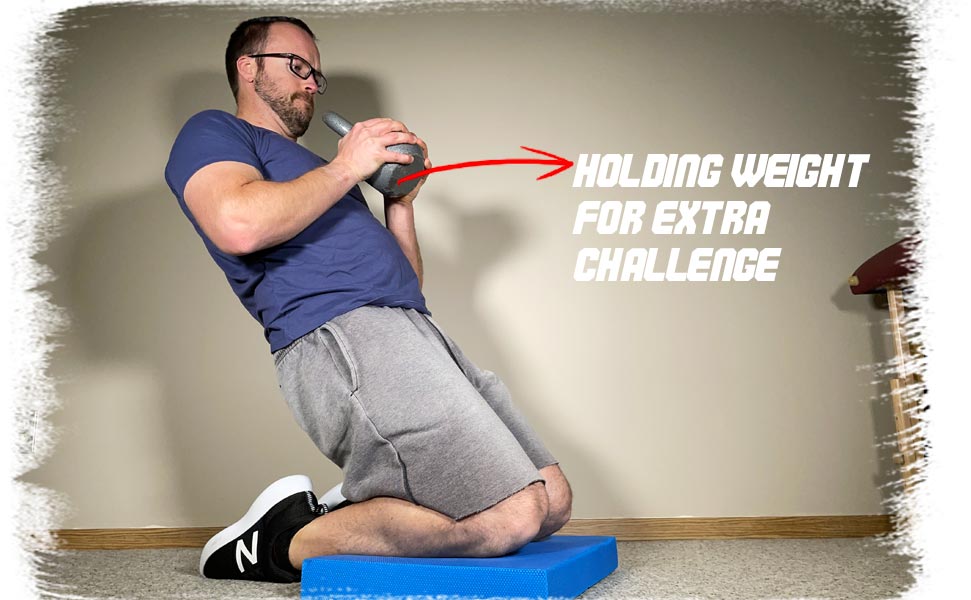
ARTICLE OVERVIEW (Quick Links)
Click/tap any of the following headlines to instantly jump to that section of the article!
Basic anatomy (and why you should know it)
Pain: understanding and fixing it
Specific interventions (for the muscles and tendons)
Final thoughts
Related article: Reverse Nordics and Knee Health: What You Must Understand
Disclaimer: While I am a physical therapist, I am not YOUR physical therapist. As a result, I cannot tell you whether or not any treatments mentioned on this website or in this article may or may not be appropriate for you, including for reverse Nordic curls. By following any information within this post, you are doing so at your own risk. You are advised to seek appropriate medical advice for any pain you may be experiencing.
Basic anatomy of the knee (and why you should know it)
By understanding the basic, rudimentary anatomy of the knee, the following sections of the article will not only make much more sense, but it will also provide you with a much more intuitive sense for understanding what structure(s) may be causing your pain and why the pain is present.
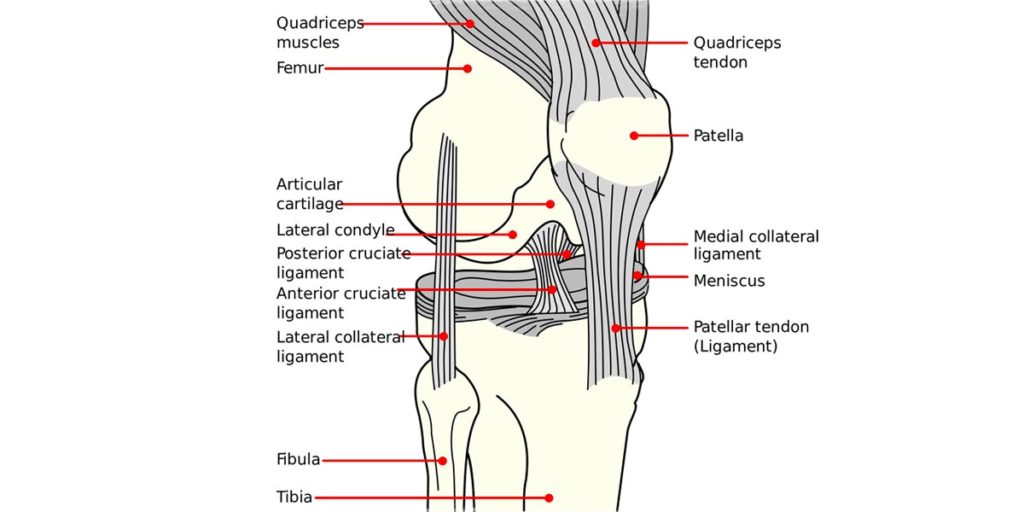
So, let’s quickly go over the basic anatomy involved with knee pain with the reverse Nordic curl.
Different tissues within and around the knee joint.
The primary tissues to be aware of that surround the knee joint are ligaments, cartilage and tendons. Despite the leg having a lot of muscle tissue in the thigh and calf, there’s actually not a whole lot of it around the knee, especially on the front side; most of the muscles that cross the knee joint turn into tendons around this area.
Cartilage around the knee
This type of tissue is found between the actual knee joint (between the end of the thigh bone and the shin bone). Each end of the bone is covered with cartilage, which helps create smooth, gliding motions of the knee joint. There’s also a particular type of cartilage that sits in between the knee joint, known as the meniscus. There are two of these structures (plural = menisci), which are the medial meniscus and the lateral meniscus. These guys act as shock absorbers for the knee joint.
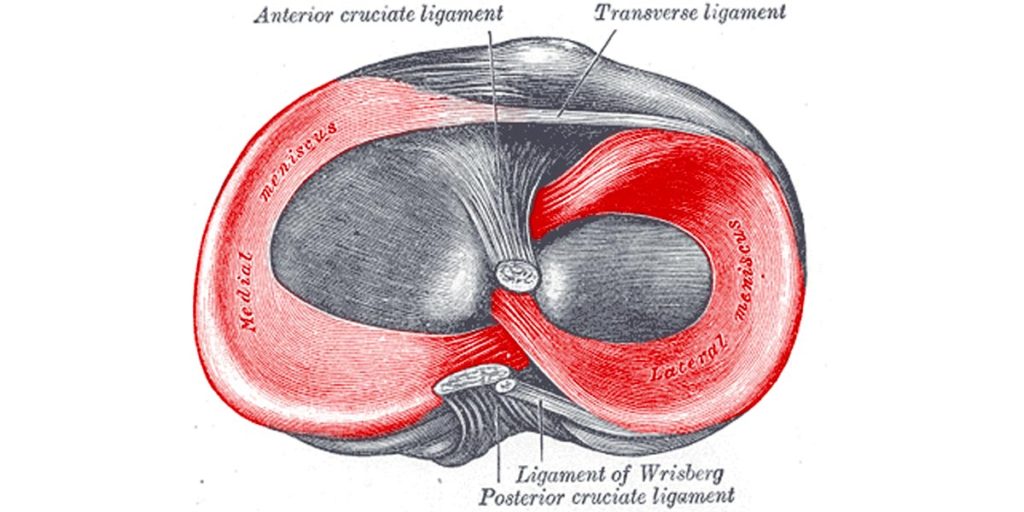
It’s not uncommon to have knee pain due to some cartilage irritation, especially with the menisci. This will be covered later in the article.
Ligaments of the knee
A ligament connects one bone to another bone. While there are a lot of individual ligaments that help hold the knee together, these tend not to be pain generators for the reverse Nordic exercise, especially if you don’t have a history of sustaining a sudden, traumatic knee injury that resulted in damaged ligaments. Therefore, ligaments won’t be discussed much in this article.
If you are confident that your pain is the result of a ligamentous issue, it would be prudent of you to seek direct, professional advice on how to navigate this issue.
Tendons of the knee
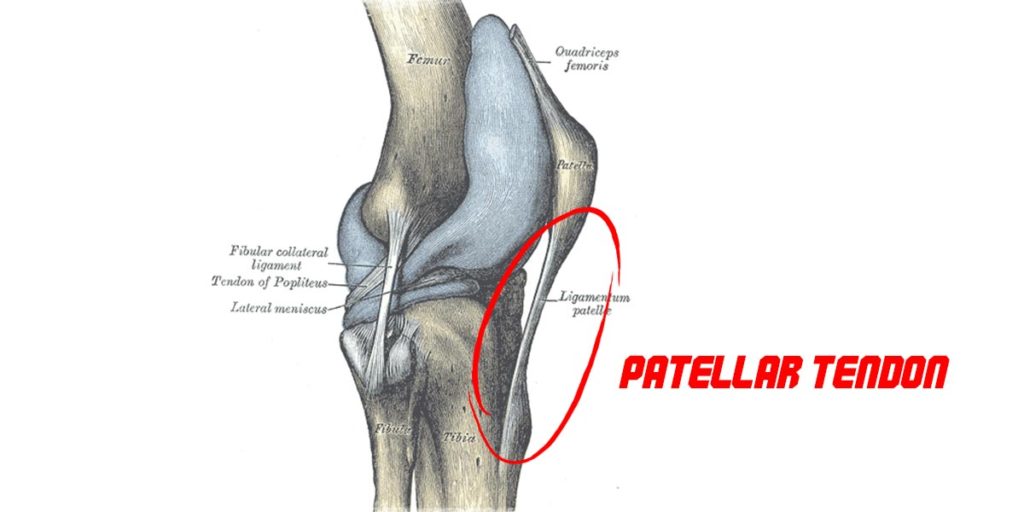
Tendons are the thick, gristly tissue that connects a muscle to a bone. There are a lot of tendons that cross the knee joint, and they can commonly create pain with knee motions if the tendons are in an unhealthy state. These tendons are common culprits of knee pain, especially with movements that require lengthening out and intense contractions (both of which take place with the reverse Nordic curl).
There will be a lot of discussion on how to deal with tendon pain later in this article.
Understanding what different types of pain means (and how to fix each one)
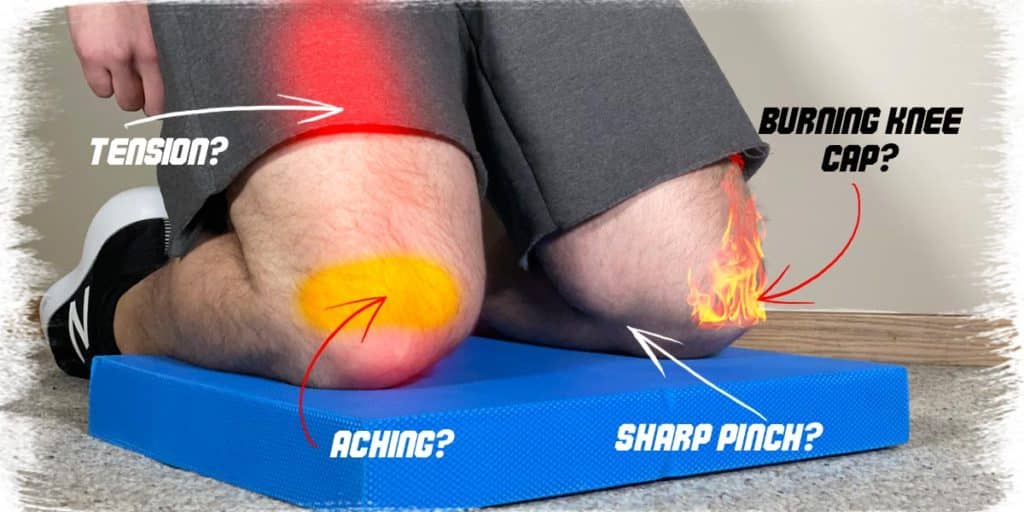
Pain tends to present in specific ways based on which tissues or structures are generating the pain. As a result, having a basic understanding of what each type of pain can signify can significantly help you out when it comes to determining which tissue or structure might be the culprit. These aren’t universal rules, mind you, but they tend to be the common patterns that are seen with knee pain.
If you’re better able to understand which specific tissues or structures are causing your pain, you’ll likely stand a much better chance at being able to take appropriate action for effectively treating the source of the pain.
Sharp, pinching pain around or in the knee
Pain that is often described as sharp, quite focal (confined to a small area), and that tends to only present itself when the knee is undergoing movement is often due to an issue within the joint itself. It often occurs from some sort of physical pinching or irritation of a structure between or within the joint itself.
The most notorious structure for getting pinched or irritated with knee bending movements is the meniscus, which is a rubber-like ring of cartilage that sits between the joint, primarily to act as a shock absorber. If you have a history of knee injuries or meniscal damage, it’s entirely possible that the meniscus is somehow getting caught or pinched during the reverse Nordic curl.
How to fix it
If you’re getting a sudden, sharp pinching pain directly in your knee joint whenever you bend it (either with reverse Nordics or any other movement), you’ll want to get familiar with the concept of Mulligan mobilization with movement (MWM) for the knee.
In short, it’s a movement you can try that involves slightly altering the position of your knee joint (usually from gentle torsion around the knee) while bending it. It’s often best performed by a trained healthcare professional. Still, you can do it at home by yourself to a certain extent with an exercise or yoga strap.
The theory behind MWM is that you’re rotating the joint in some sort of way that frees up the meniscus or prevents it from getting caught or stuck during knee bending, which can otherwise create sharp, sudden pain that’s felt in the knee joint. For some people, their pain noticeably reduces, and they get further range of motion when their shinbone is twisted slightly inwards or outwards when performing the movement.
If you’re able to find a position that feels a bit better, try and perform around three sets of ten (3×10) repetitions a couple of times every day for a few weeks, as this may prove drastically helpful in getting your knee to settle down a bit more.
Intense stretching sensations around the knee
If you’re feeling quite an aggressive or intense stretching sensation around the front of your knee (most often times directly above your kneecap), it can be a sign of inadequate tissue mobility. This inadequate mobility can be from either the quadriceps tendon, the patellar tendon or the quadriceps muscles themselves. You’ll likely notice that the further you lean back into the reverse Nordic curl, the more intense it will feel.
Pay particular attention to whether or not one knee feels like it gets a more aggressive stretch than the other. This can be common, and if it happens to be the case with you, working to address it is a wise move to make as differences in movement ability from one side of the body to the other tend to be a solid predictor of future injury to the area (especially if you’re an active individual).
Thankfully, if you’re simply feeling stretching sensations that are a bit more intense than you’d like them to be, it may be a rather straightforward fix. It often can be remedied within a matter of minutes).
How to fix it
Regardless of where you’ve been feeling the overly intense stretching sensation, start by making sure that you’ve warmed up the structures and tissues above, below and around the entire knee joint. A good warmup helps to improve blood flow to the area, which can increase local temperature, resulting in enhanced fluid movement of the joint and around the tissues. Warmth helps to reduce stiffness to muscles and tendons, which means they won’t be as sensitive or resistant to more extensive ranges of motion when being lengthened out.
If you’re knees and thighs aren’t thoroughly warmed up before performing the reverse Nordic curl, you can opt to warm them up through an activity such a riding a bike with moderate intensity for a handful of minutes, jogging, or some other form of leg-dominant cardio-based activity.
If just one knee or thigh is acting up, you can opt for applying local heat to the area for a minute or two. Heating pads work great for this, as you can drape them directly over the targeted area. If you don’t have access to a heating pad, you could consider trying a topical heat rub, such as Tiger Balm (my personal favourite!). A topical heat rub will help bring a bit more blood flow to the area (mainly the skin). While it likely won’t be a game-changer (sometimes it is, however), it can often knock down the overly intense stretching sensation down just a tiny bit.
Burning pain underneath the kneecap
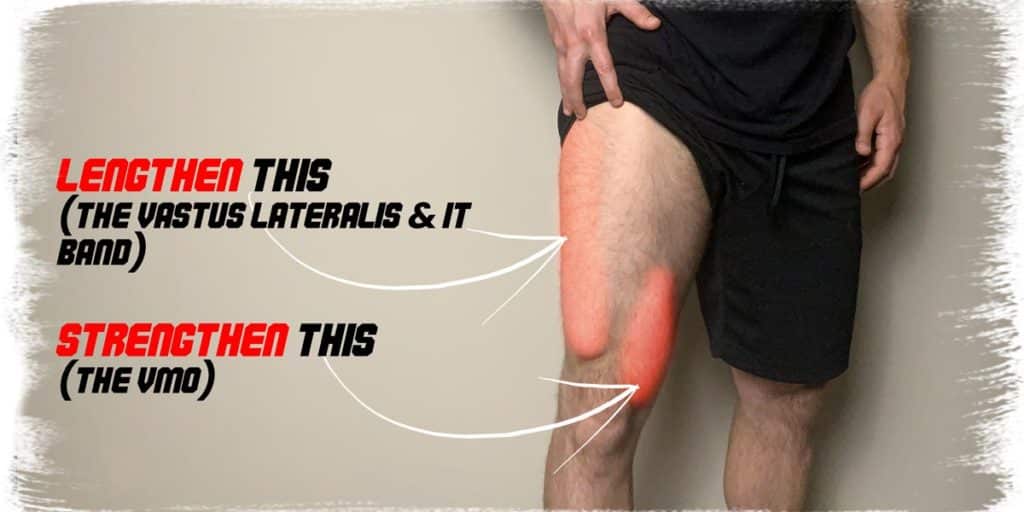
If you feel the pain you’ve been experiencing in your knee is located underneath your kneecap, it’s possible that the pain is the result of irritated cartilage on the underside of the kneecap. This type of pain tends to feel sharp and frequently burning-like in nature. This is a commonly experienced knee issue known as patellofemoral pain syndrome, which refers to an irritation underneath the kneecap (the patella) that occurs due to mal-tracking of the kneecap.
With patellofemoral pain syndrome, the result tends to be an uneven pulling force from the quadriceps tendon on the kneecap. It’s most often seen that the outer portion of the thigh is tighter or more restricted than the front or inner portions, creating an imbalanced force. This imbalance of pulling force causes the knee cap to want to be pulled sideways when the knee straightens, meaning it doesn’t sit properly in its groove, causing irritation on the underside of the patella.
How to fix it
General strengthening exercises of the quadriceps and hips are a good approach for evening out the amount of force that each quadriceps muscle places on the tendon. Exercises that strengthen the inner quadriceps muscle (the vastus medialis obliquus) may be helpful.
It would also be worth making attempts to eliminate or reduce any excessive tissue restriction or tightness on the outer quadriceps muscle (the vastus lateralis), as any excessive hypomobility (inadequate mobility) to this muscle can potentially cause (or assist) with the tracking issue.
Aching or dull-pain sensations around the knee
Sensations that are dull and achy in nature often signify irritation that arises from unhealthy tendons. Tendons are what anchor a muscle onto a bone. They are a thick, gristly sort of tissue that can become unhealthy for various reasons, which results in the condition known as tendinosis or tendinopathy.
These sensations are most often felt in the knee tendon (patellar tendon) itself or in the common quadriceps tendon, which attaches to the very top of the kneecap.
How to fix it
See the section below, as there’s a lot to unpack with this incredibly common issue.
Specific interventions for the muscles and tendons
Since muscles and tendons of the knee often comprise the vast majority of pain or discomfort in individuals performing the reverse Nordic curl, it’s worth devoting an entire section within this article towards interventions and strategies that you can try when it comes to eliminating pain and improving muscle and tendon health.
Each of the following interventions has been shown in the literature to positively affect muscles and tendons or at least provide beneficial environments, such as enhanced blood flow to the treated area. Try any or all of the following based on what you feel may be most appropriate for you.
Make sure you read the final subsection on how to appropriately load tendons in order to reduce pain and get them healthy again!
Compression flossing
Compression flossing (often called Voodoo flossing) is a self-treatment technique that involves wrapping a latex band around certain portions of one’s extremity while then performing specific movements for the targeted area. This technique aims to create a shearing force around tight and immobile tissues by pinning down them while forcing them to move in various ways. Doing so has been shown to help restore mobility, enhance blood flow, and decrease pain for muscles and their respective tendons.
IASTM
IASTM stands for Instrument Assisted Soft Tissue Mobilization. It’s similar to compression flossing in that it provides a compressive force to augment favorable tissue quality changes. While it doesn’t provide the shearing forces experienced with flossing, it can provide much higher amounts of compressive forces (think of it as a form of self deep tissue massage).
Related Article: Here’s How it Works to Decrease Pain and Improve Mobility
IASTM has also been shown to create favorable changes in tissue dynamics and decrease perceived levels of pain.
While there are dozens upon dozens of special tools, rollers and other devices that you can use for improving your muscle and tendon mobility while simultaneously decreasing pain, my go-to (for the quadriceps and general thigh) is always using the sleeve of a barbell. It’s aggressive, painful, and works like an absolute charm.
Check out the following one-minute video of mine on how to use a barbell on the muscles and tendons of your thigh for creating better movement and decreasing the pain associated with tight tissues.
Decompressive techniques
The value of using an intervention that decompresses (lifts and separates) the layers of tissue beneath the skin is important to consider when working on improving tissue health. This technique is most often referred to as cupping or cupping therapy. And, while IASTM and flossing and other interventions are based around compressing tissue layers, cupping is the exact opposite.
Related article: How Often to Perform Cupping Therapy (if You Want the BEST Results)
Lifting the tissues creates a negative pressure gradient underneath the cup (and thus the skin), pulling blood into the local area. Lifting tissue layers and enhancing blood flow can help to improve tissue mobility (especially for fascial mobility, which wraps around the muscle).
While we’re not entirely sure how cupping can influence tissues, literature shows that it’s quite a safe intervention and can yield some pain-relieving benefits, so it’s certainly worth incorporating into your self-treatments. A set of silicone cups are dirt-cheap to pick up and easy to use, so consider this application if you want to do all you can to give your muscles, tendons and fascia some love.
Tendon loading parameters for healthier tendons
Tendons that are unhealthy and have subsequently become weak and painful often are known as tendinopathic, meaning that the pain is coming from the unhealthy state that the tendon is in. It’s a pervasive orthopedic issue (one that I treat in the clinic on a daily basis).
While getting these affected tendons healthy again can be a stubborn process, thankfully, it’s frequently a straightforward process as long as you stimulate the tendon with the right load, movements and frequency.
Tendons don’t really get a lot better when only given rest. They often require strengthening through resistance exercises. However, the resistance must be the exact right amount; too little stimulation won’t provide the stimulation required for proper adaptations, but too much resistance will lead to an overloaded and flared-up tendon.
While performing the exercise, tendon exercises that drum up the slightest bit of discomfort (about 2 out of 10 using a pain scale, where 0 is no pain and 10 is the worst pain ever) are required, as this provides a physical stimulus to the tissue.
While performing the exercise, the response from the tendon that you’re looking for is an actual decrease (or even elimination) of the subtle discomfort that you felt when performing your first handful of repetitions.
In other words: Your goal should be to reduce or eliminate the discomfort while the tendon is under load.
I typically have my patients perform 3 sets of 10-12 repetitions with a load that creates this phenomenon.
Once you no longer can drum up any discomfort from the weight you’ve been using (can take anywhere from a week or more), bump the weight up and repeat the process. Repeat this process until you cannot drum up any discomfort, even when working at near maximum load.
Final thoughts
Knee pain that’s experienced with the reverse Nordic curl can often be remedied, allowing you to continue on with this incredibly simple yet highly beneficial exercise. The cornerstone to eliminating the pain you’re experiencing is successfully identifying which structure or structures and tissues are causing the pain. Once you’re able to pinpoint where and why the pain is occurring, you stand a solid chance of getting it under control and eliminated altogether.
It will likely take a bit of work and persistence to get things fully under control. Still, since you’re someone who understands what it means to be persistent and understands the rewards persistence yields, I have no doubts that you’re going to work to make it happen!
Train hard and train smart. You’ve got this!

Hi! I’m Jim Wittstrom, PT, DPT, CSCS, Pn1.
I am a physical therapist who is passionate about all things pertaining to strength & conditioning, human movement, injury prevention and rehabilitation. I created StrengthResurgence.com in order to help others become stronger and healthier. I also love helping aspiring students and therapists fulfill their dreams of becoming successful in school and within their clinical PT practice. Thanks for checking out my site!

